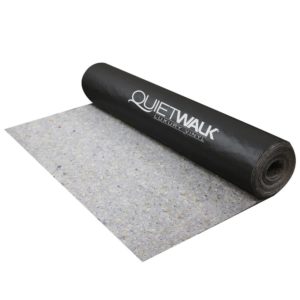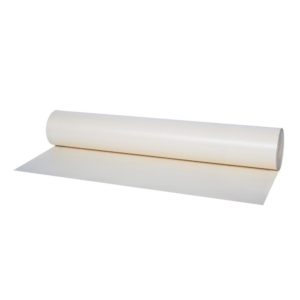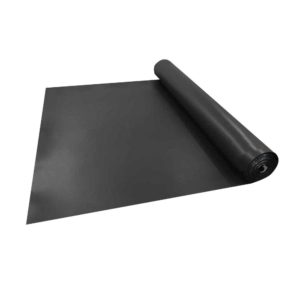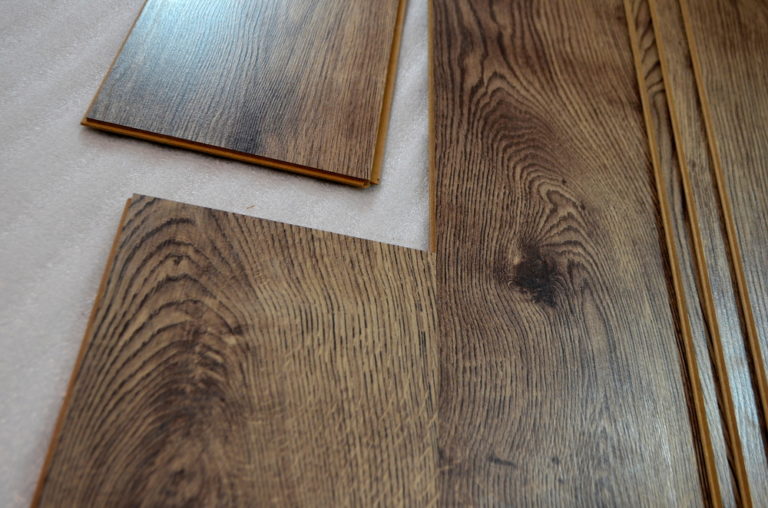Do I Need Underlayment for Vinyl Plank Flooring?
Jump to your question:
Do you have to have underlayment for vinyl plank flooring
If you’re wondering if you absolutely must have underlayment for your vinyl plank flooring, this article is to help give you a better understanding of when you need underlayment and when you don’t. Sadly, there is not a one clear answer for every given situation. Your need for underlayment will primarily depend on your existing flooring situation and the specifications of the vinyl you plan to install.
To begin, you will want to evaluate your subfloor. Is your subfloor completely level? Is it free of dents and squeaks? Underlayment can be used to compensate for some minor flaws in the subfloor, but major flaws will need to be fixed before installation. Some vinyl plank is made to be used without any underlayment, or even comes with a pre-attached pad which makes the levelness of your floor critical for a clean, long-lasting, installation.
Do you need an underlayment for vinyl plank flooring on concrete
Concrete subfloors are a little bit more tricky when it comes to installation, since concrete brings on the aspect of moisture, a very hard surface, and a chilly floor. This is where underlayment can do the trick. Since most Vinyl planking is waterproof, the planks will be okay over concrete in the basement if there’s a moisture issue, but mold and mildew can grow on the bottom of them. A moisture barrier is the easiest and cheapest way to avoid mold and mildew. They also help prevent ridiculous amounts of humidity from rising in the air. This can make a big difference in how comfortable your basement is. Underlayment on concrete subfloors will also give them a softer feel to walk on. This difference may seem subtle, but having a softer floor can make the difference when it comes to peoples back and feet hurting from standing on their feet all day.
Do you need an underlayment for vinyl plank flooring on wood
If your subfloor is very even and smooth, you do not need an underlayment under your vinyl plank on hardwood. However, underlayment can still prove resourceful when used for sound reduction and cushioning. An underlayment will help level out minor imperfections in your wood subfloor as well. Vinyl installations on wood will not require any sort of moisture barrier.
Do you need an underlayment under vinyl plank flooring on existing floor
Luxury vinyl plank can be installed over existing floors, such as tile and linoleum. You will not have to worry about a moisture barrier in this case, since your pre-existing floors should take care of that. Keep in mind an even subfloor is extremely important when it comes to vinyl. If you’re installing over something like tile make sure to fill in any grout lines and potential unevenness. Your existing flooring should be in a good condition before attempting to install over it. If you are confident your existing floors are very even, and the manufacturers instructions don’t demand an underlayment, you don’t need an underlayment. An underlayment however, can help ensure the evenness of your previous subfloor and provide extra cushion and sound absorption.
Underlayment under luxury vinyl with attached pad
Important Considerations and Specifications
No matter your subfloor, it is vital that you follow your vinyl plank flooring manufacturers installation instructions first. When the manufacturer recommends a certain underlayment, not using it can be a major issue. It will most likely mean your flooring won’t last as long or perform as well. The manufacturers warranty will likely be voided as well.
Even though some manufacturers require underlayment, some will warn against it. When luxury vinyl plank has the built-in attached pad or underlayment layer, the odds are very good that you will negate the warranty if you ignore the instructions and install an underlay.
Vinyl plank has a click and lock system that is similar to laminate, but the planks usually have a thinner construction. Vinyl planks usually fall in the 2mm – 8mm range. The general rule of thumb is any vinyl 4mm and over can have a vinyl “specific” underlayment. Vinyl floors that fall under 4mm should be installed directly over the subfloor, as an underlayment would create too much cushion, resulting in more dents and wear and tear. It is important to read your manufacturers instructions to find more details about what underlayment can be used. If your vinyl is under 4mm and you have moisture concerns, it is recommended to use a vapor barrier ONLY. Vinyl plank that can not have an underlayment even further pushes the importance of an even subfloor.




